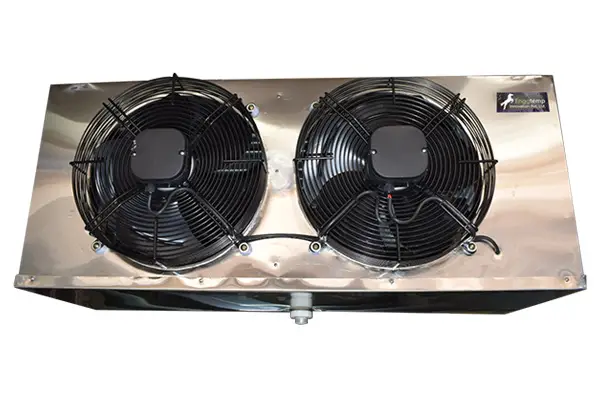
- Introduction:
We are a manufacturer and provider of a high-quality variety of cold room refrigeration system. This cold room refrigeration system comes in a variety of sizes and qualities. It incorporates both air and water cooling. Enggtemp is of the highest quality and has been carefully designed to be energy efficient, noiseless, simple to maintain, and compact in size, providing the same performance for many years.
- cold room refrigeration system:
A cold room refrigeration system, also known as a walk-in refrigeration system, is a type of refrigeration system used to keep temperatures low in a cold room or walk-in cooler. These systems are often used in commercial or industrial settings to keep perishable commodities at controlled temperatures, such as restaurants, supermarkets, food processing companies, and pharmaceutical facilities.
The refrigeration system is often outfitted with controls and sensors to monitor and manage temperature, pressure, and other parameters. These components ensure that the system runs within the appropriate temperature range and offer notifications or alarms if any irregularities occur.
Features of cold room refrigeration system:
- Free-from-worry tasks
- A uniform air course
- Structure that is streamlined
- Productivity comes from vitality.
- Refrigeration persuasion
- Ideal power utilization
The cold room refrigeration system works on the vapour compression cycle theory. The compressor presses the refrigeration gas, rising its pressure and temperature. The high-pressure gas then flows into the condenser, where it condenses and releases heat to the surrounding environment. The cold room refrigeration system itself is built using insulation materials to reduce heat transfer between the interior and outside surroundings. Polyurethane foam, polystyrene, and mineral wool are common insulating materials.
We have Pre-Engineered is the solution when you need a full-size walk-in with more flexibility. Made from the same high-quality panels and components that Enggtemp is known for, you can expect the same level of quality, flexibility, durability, and energy efficiency. The Enggtemp Pre-Engineered system is made up of ready-built and ready-to-assemble components. We considerably minimize ship and installation time and, in most cases, cost by manufacturing and warehousing these components ahead of time, depending on your particular requirements.
